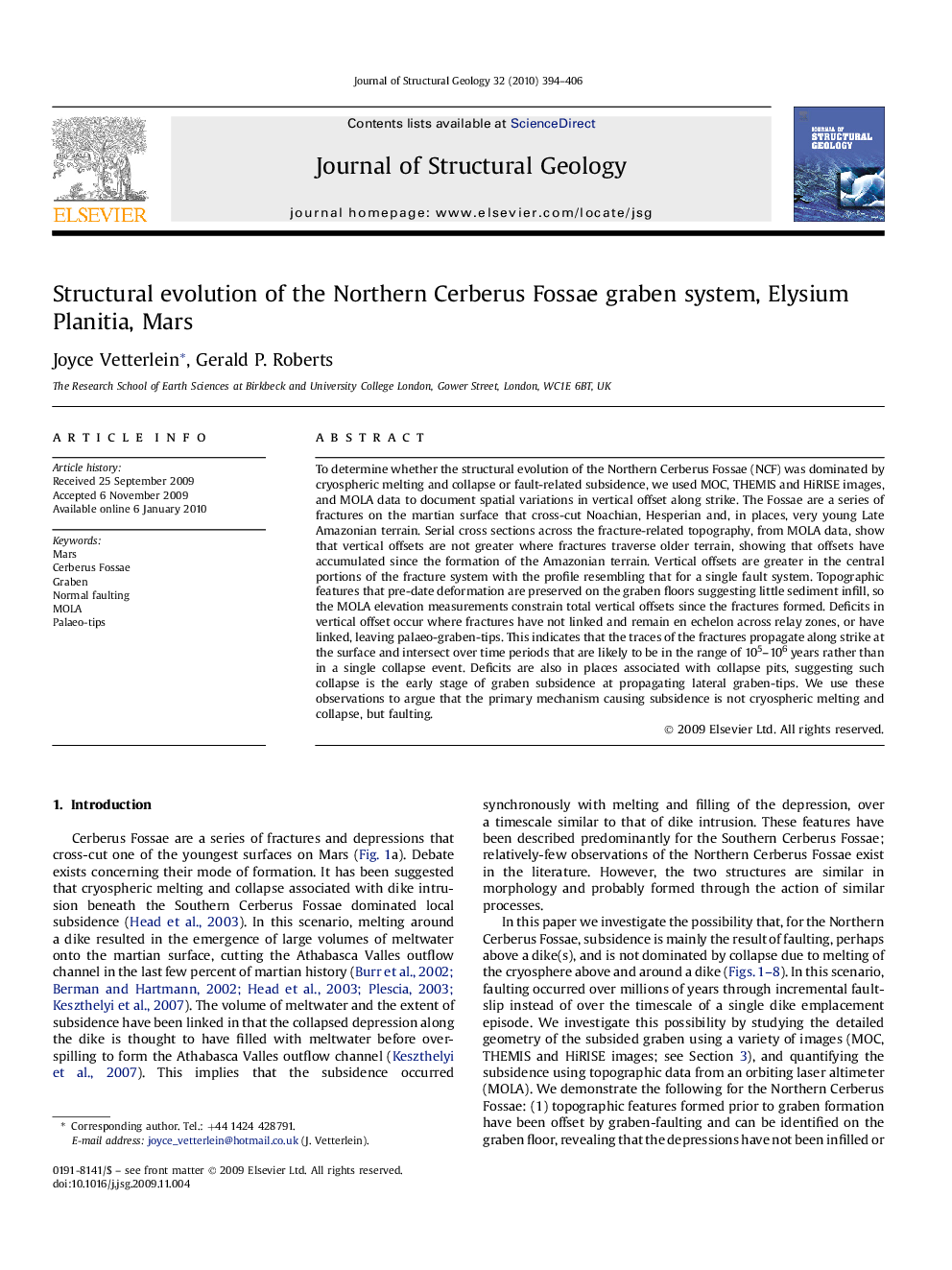| Article ID | Journal | Published Year | Pages | File Type |
|---|---|---|---|---|
| 4733599 | Journal of Structural Geology | 2010 | 13 Pages |
Abstract
To determine whether the structural evolution of the Northern Cerberus Fossae (NCF) was dominated by cryospheric melting and collapse or fault-related subsidence, we used MOC, THEMIS and HiRISE images, and MOLA data to document spatial variations in vertical offset along strike. The Fossae are a series of fractures on the martian surface that cross-cut Noachian, Hesperian and, in places, very young Late Amazonian terrain. Serial cross sections across the fracture-related topography, from MOLA data, show that vertical offsets are not greater where fractures traverse older terrain, showing that offsets have accumulated since the formation of the Amazonian terrain. Vertical offsets are greater in the central portions of the fracture system with the profile resembling that for a single fault system. Topographic features that pre-date deformation are preserved on the graben floors suggesting little sediment infill, so the MOLA elevation measurements constrain total vertical offsets since the fractures formed. Deficits in vertical offset occur where fractures have not linked and remain en echelon across relay zones, or have linked, leaving palaeo-graben-tips. This indicates that the traces of the fractures propagate along strike at the surface and intersect over time periods that are likely to be in the range of 105-106 years rather than in a single collapse event. Deficits are also in places associated with collapse pits, suggesting such collapse is the early stage of graben subsidence at propagating lateral graben-tips. We use these observations to argue that the primary mechanism causing subsidence is not cryospheric melting and collapse, but faulting.
Keywords
Related Topics
Physical Sciences and Engineering
Earth and Planetary Sciences
Geology
Authors
Joyce Vetterlein, Gerald P. Roberts,
